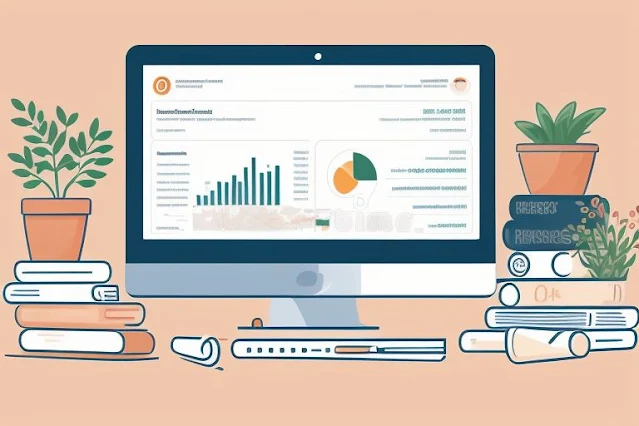 |
| The Easiest Way To Get Money Fast Is With A Personal Loan |
Get Money Fast Is With A Personal Loan
In today's fast-paced world, financial emergencies or unexpected expenses can arise when we least expect them. Whether it's a medical emergency, car repairs, or a sudden home renovation project, having access to quick funds is essential. While many options exist for obtaining fast cash, one of the easiest and most convenient solutions is a personal loan. In this comprehensive guide, we'll delve into the world of personal loans, providing detailed information on what they are, how they work, and why they can be the best choice for obtaining money fast.
What is a Personal Loan?
A personal loan is a type of installment loan offered by financial institutions, including banks, credit unions, and online lenders. Unlike specific-purpose loans like auto loans or mortgages, personal loans are versatile and can be used for various purposes, making them an attractive option for borrowers facing unexpected expenses or financial emergencies.
How Do Personal Loans Work?
Personal loans operate on a straightforward principle: borrowers receive a lump sum of money from a lender, which is then repaid over time with interest. Let's break down the key components of how personal loans work:
1. Application Process: To apply for a personal loan, borrowers typically need to provide information about their income, employment status, credit history, and other financial details. Lenders use this information to assess the borrower's creditworthiness and determine the terms of the loan.
2. Approval and Disbursement: Once the application is submitted, lenders review the borrower's information and make a decision regarding loan approval. Many online lenders offer quick approval processes, with some approving applications within minutes. Upon approval, the funds are disbursed to the borrower, either deposited directly into their bank account or issued as a check.
3. Repayment Terms: Personal loans come with fixed repayment terms, meaning borrowers make regular monthly payments over a predetermined period until the loan is fully repaid. The repayment period can vary depending on the lender and the amount borrowed, ranging from a few months to several years.
4. Interest Rates: Personal loans may have fixed or variable interest rates. Fixed-rate loans have a consistent interest rate throughout the loan term, making it easier for borrowers to budget for monthly payments. Variable-rate loans, on the other hand, may fluctuate based on market conditions, potentially affecting the borrower's monthly payment amount.
5. Fees and Charges: In addition to interest rates, borrowers should be aware of any fees associated with the loan, such as origination fees, late payment fees, or prepayment penalties. These fees can vary among lenders, so it's essential to review the loan agreement carefully before signing.
Why Choose a Personal Loan for Fast Cash?
Personal loans offer several advantages that make them an attractive option for obtaining money quickly:
1. Quick Approval Process: Compared to traditional bank loans or credit cards, personal loans often have a faster approval process, especially with online lenders. Many lenders can approve applications within minutes and disburse funds within a few business days, making them an ideal choice for borrowers in urgent need of cash.
2. No Collateral Required: Personal loans are typically unsecured, meaning borrowers don't need to pledge any assets as collateral to qualify. This makes personal loans accessible to a wider range of borrowers who may not have valuable assets to use as security.
3. Flexible Use of Funds: Unlike specific-purpose loans, such as auto loans or mortgages, personal loans offer borrowers the flexibility to use the funds for any purpose they choose. Whether it's covering medical expenses, consolidating high-interest debt, or making a large purchase, borrowers have the freedom to use the funds as needed.
4. Fixed Interest Rates: Many personal loans come with fixed interest rates, meaning the rate remains the same throughout the life of the loan. This provides borrowers with stability and predictability, as they won't have to worry about fluctuations in interest rates affecting their monthly payments.
5. Improve Credit Score: Taking out a personal loan and making on-time payments can help improve the borrower's credit score. A positive payment history demonstrates to lenders that the borrower is a responsible borrower, which can lead to better terms on future loans and credit products.
How to Apply for a Personal Loan:
Applying for a personal loan involves several steps to ensure a smooth and successful process:
1. Check Your Credit Score: Before applying for a personal loan, it's essential to know your credit score. You can obtain a free credit report from each of the three major credit bureaus (Equifax, Experian, and TransUnion) once a year at AnnualCreditReport.com. A higher credit score increases your chances of qualifying for a loan with favorable terms.
2. Research Lenders: Shop around and compare offers from multiple lenders to find the best terms and interest rates. Consider factors such as the APR (annual percentage rate), repayment terms, and any fees associated with the loan. Online lenders, banks, and credit unions are all potential sources for personal loans.
3. Gather Documentation: Before applying for a personal loan, gather necessary documentation, including proof of income, employment verification, identification (such as a driver's license or passport), and any other documents required by the lender. Having these documents ready can expedite the application process.
4. Complete the Application: Fill out the loan application accurately and honestly, providing all requested information. Be prepared to answer questions about your income, employment history, and financial situation. Double-check the application for any errors or missing information before submitting it.
5. Review Loan Offers: Once you receive loan offers from lenders, carefully review the terms and conditions of each offer. Pay close attention to the interest rate, repayment schedule, and any fees associated with the loan. Choose the offer that best suits your needs and financial situation.
6. Accept Funds and Repay: If your loan application is approved, accept the loan funds and use them responsibly for your intended purpose. Make timely payments each month to repay the loan according to the agreed-upon terms. Setting up automatic payments can help ensure you never miss a payment.
Conclusion
In conclusion, when faced with a financial emergency or unexpected expense, a personal loan can be the easiest and most convenient way to obtain money quickly. With a straightforward application process, quick approval times, and flexible use of funds, personal loans offer borrowers a practical solution for addressing their immediate financial needs.
However, it's essential to borrow responsibly and only take out loans that you can afford to repay. By understanding how personal loans work and following the steps outlined in this guide, you can access the funds you need without unnecessary stress or hassle. Whether it's covering medical bills, consolidating debt, or making a major purchase, a personal loan can provide the financial flexibility you need to navigate life's unexpected challenges.









